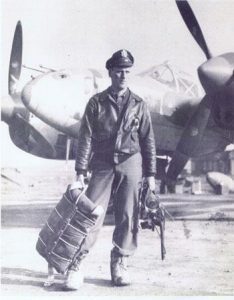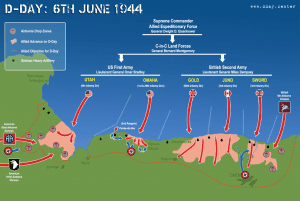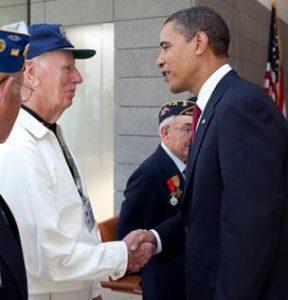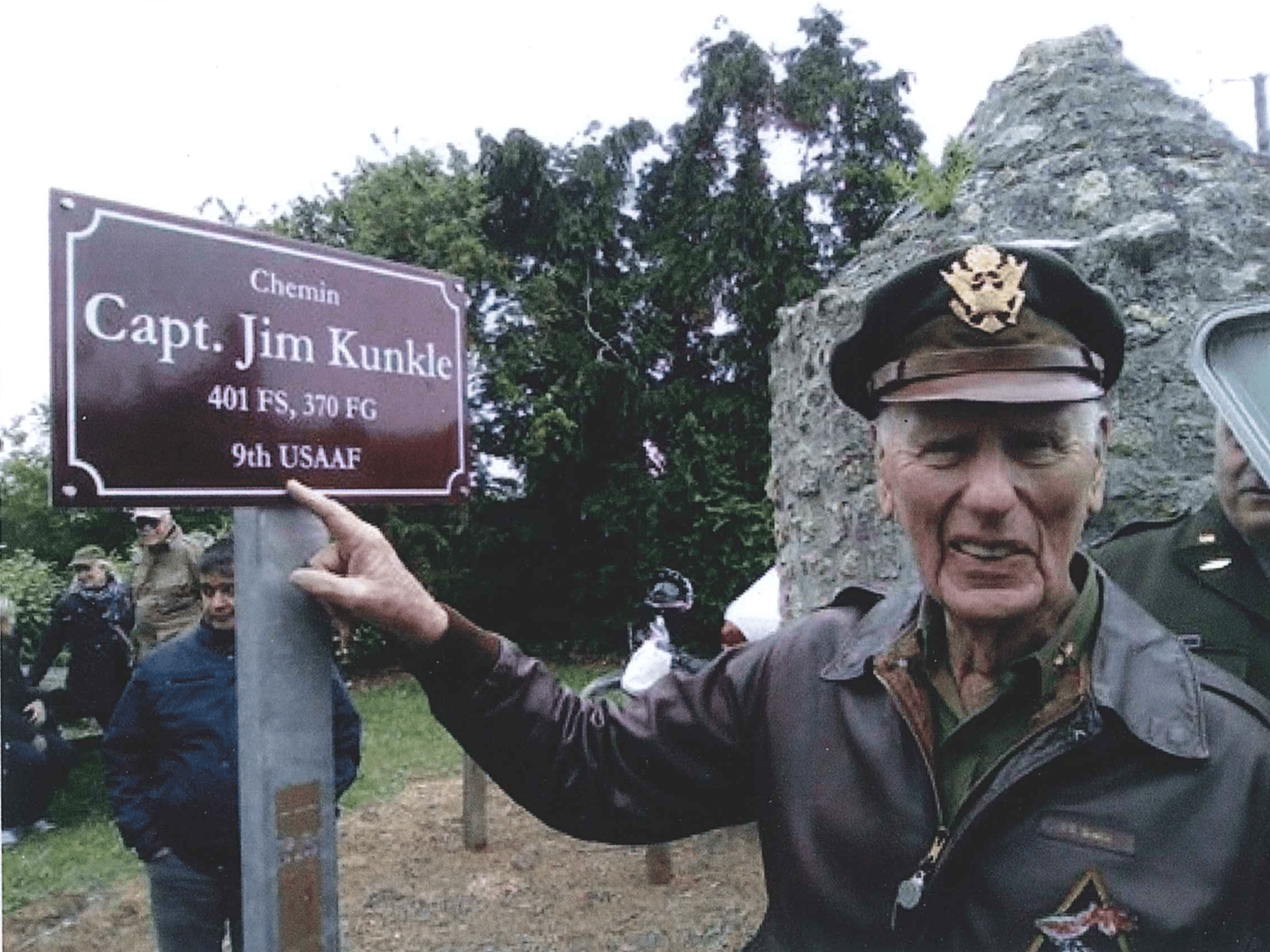By Raiza Giorgi
publisher@santaynezvalleystar.com
World War II is more than a distant memory in places like Normandy.
Before the D-Day invasion, France was occupied by Nazis who terrorized small communities, killing people who were even suspected of helping the French Resistance.
The Coisnard family owned the property where eventually the Allied forces built an airstrip known as Advanced Landing Ground A-1. The large stone estate had been occupied by Nazi troops, who shot one of the Coisnard brothers when they caught him relaying the German army’s locations and plans to the Allies.

First Lt. James Kunkle is seen at the A-78 airfield in Florennes, Belgium, during World War II.
“The family still owns the property today and keep the room he was shot in, just as it was, as a reminder of what he did to help. I’ve been through that room, and seeing the bullet holes in the walls just reminded me of what we were there to help fight for,” said WWII fighter pilot Jim Kunkle of Santa Ynez.
When the Kunkle family visits Normandy, they stay with the families that hosted Allied forces during the war.
“The hospitality of the French people in Normandy is amazing. They are still, after so many years, so grateful for what we did to help them break free of German occupation,” Kunkle said.
Kunkle is not only a fixture of the Santa Ynez Valley community, but he’s also a beloved figure in Normandy. The community even named a street in his honor when he visited in 2018.
For the 75th anniversary of the famed invasion, Kunkle and his family will be among thousands of people who will descend on Normandy on the French coast to pay homage to the soldiers, sailors and airmen who took part in D-Day, Operation Overlord and the Battle of Normandy on June 6, 1944.
Kunkle will be honored during the ceremony for his heroic efforts during the war that helped the Allied troops advance, pushing the Nazis back into Germany.
“I am hoping to see some of my squadron, but … one of the last I know of lives in a retirement home in Texas. I am not sure if he will be able to be there,” Kunkle said.
Veterans and their families, political figures, re-enactors, military vehicle enthusiasts and thousands of other men, women and children pay tribute to the those who fought to liberate Europe and remember those who never returned.
 The battle started after almost five years of war and after many months of planning, preparation and training. The Allied forces under the overall command of American General Dwight D. Eisenhower landed on the beaches of Hitler’s “Fortress Europe.”
The battle started after almost five years of war and after many months of planning, preparation and training. The Allied forces under the overall command of American General Dwight D. Eisenhower landed on the beaches of Hitler’s “Fortress Europe.”
Paratroopers and glider-borne infantry were the first to touch French soil in the early hours of the morning on the eastern and western flanks of the invasion area. Several hours later, as the sun began to rise, an enormous armada of ships delivered fighting men and equipment onto five beaches across a 50-mile front of the Normandy coastline.
By the day’s end, 156,000 troops had been landed and a tentative but strengthening beachhead established. A door in Hitler’s much-vaunted “Atlantic Wall” had been well and truly kicked open. The battle culminated near the end of August 1944, with the encirclement and capture of about 150,000 German soldiers at Falaise, and with the Allied forces crossing the River Seine on their march toward Paris.
Kunkle was responsible for protecting the ground troops just after D-Day. He was assigned to the 9th Air Force and in charge of attacking anything that moved, cutting off supplies to enemy forces, he said.
“I wasn’t involved in the first operation, but we came in after the British RAF (Royal Air Force). Our P-38 fighter planes could fly further and do more damage,” Kunkle said.
Kunkle recalled one mission when he found a crossroads where German troops were camouflaged, and he dropped two 500-pound bombs on them.
“I went back a year after the war ended and found the spot where I had annihilated them, and there was still evidence,” Kunkle said.
On another mission, Kunkle recalled, when he dropped into the area where the Allied forces were attacking the Germans it looked like a scene from a movie.
“We got the call to help late in the afternoon, and we only had several hours … if we weren’t back on ground by 11 p.m., whoever was in the air would be shot down, no matter if you were friendly or enemy,” Kunkle said.
As they came into view of the mission the clouds parted and the battle was vivid. Kunkle said he was so focused on shooting the enemy he didn’t have time to be afraid, but when he got back to base he noticed his chewing gum had disintegrated between his teeth.
On Sept. 15, 1944, Kunkle was shot down near Aachen, Germany, while protecting fellow pilots.
He wasn’t able to communicate with his command and broke from formation to attack the enemy alone. He was able to hit two enemy aircraft before his plane was shot down. He suffered multiple burns as he climbed out, but he was able to open his parachute and land near some American infantry.
After Kunkle was rescued, treated for his burns and released from the hospital, he was flown to Portland, Ore., where he helped to test the latest flight equipment and was preparing to go back to the Pacific for the invasion of Japan when the atomic bomb was dropped, which ended the war.

World War II veteran and Santa Ynez Valley resident James Kunkle met then-President Barack Obama at D-Day ceremonies in Normandy in June 2009
Kunkle was honored with the Distinguished Service Cross and honored by then-President Obama and French President Sarkozy in a D-Day commemoration ceremony in June 2009.
Kunkle continues to fly his own airplane at the ripe age of 96, and he also passes his flying exams better than people half his age, according to his wife, Ruth Kunkle.
For more information on the D-Day anniversary and for events planned in Normandy and in the United States, log onto www.dday-anniversary.com.






